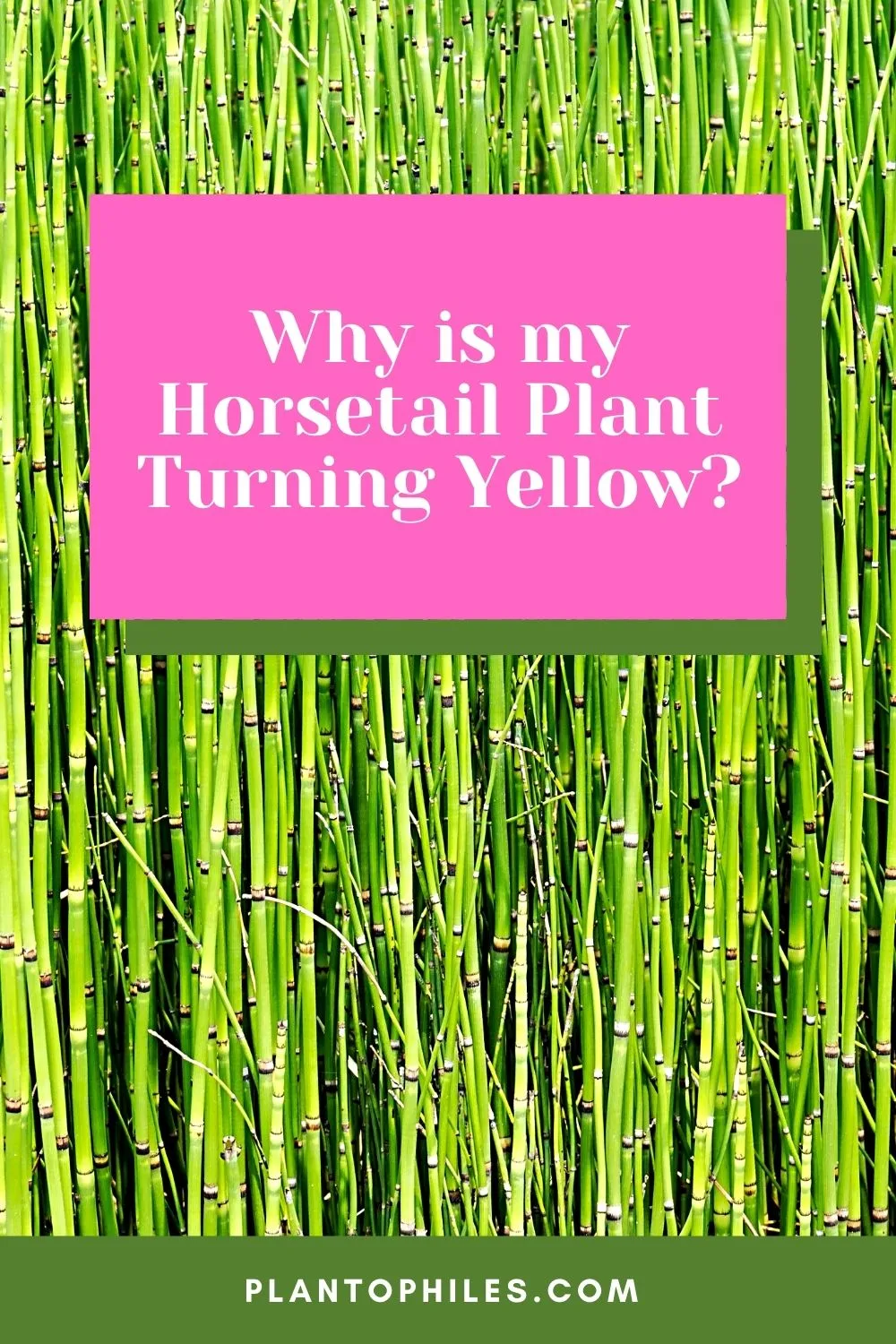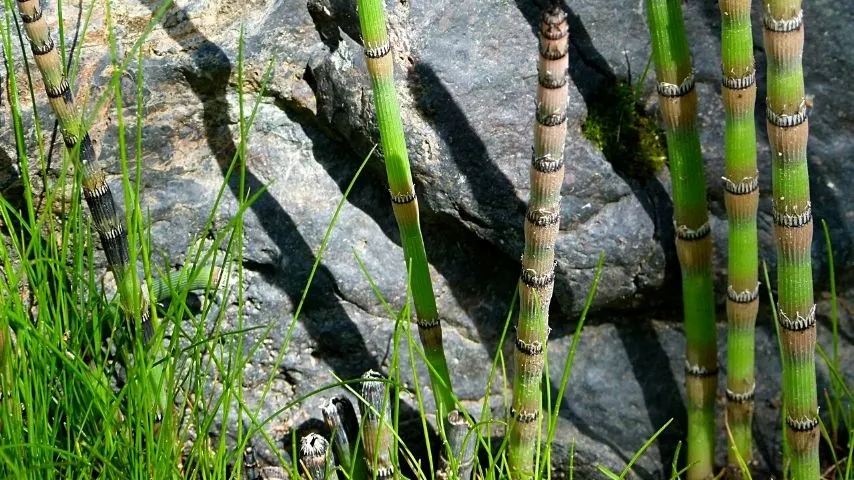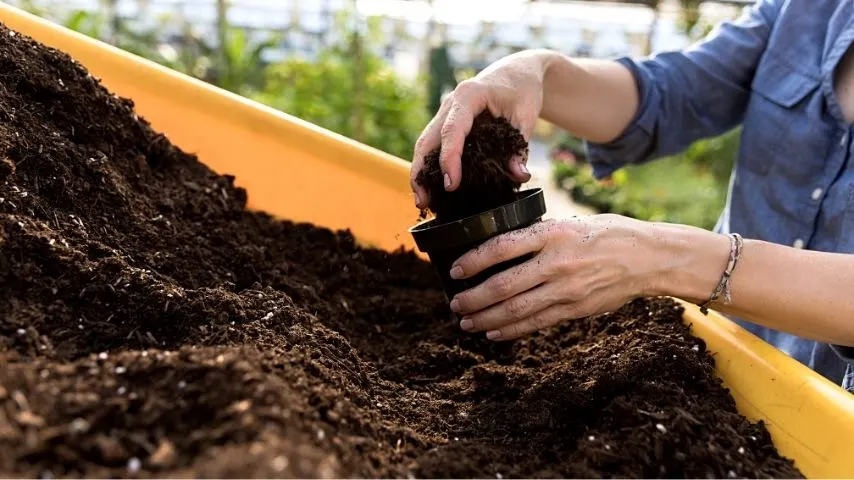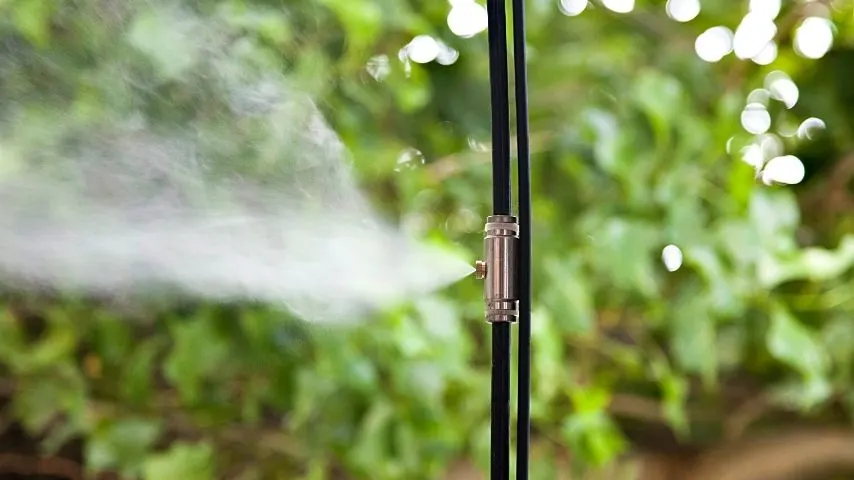Horsetail plants are hardy (as everyone and his brother will keep telling you), so it can be disconcerting for first-time horsetail plant gardeners to notice their hollow, jointed, bamboo-like darling suddenly turning yellow.
However, assuming you have planted your horsetail in a USDA Hardiness Zone that is between 7 and 10, your horsetail ought to do okay.
If you notice your horsetail plant turning yellow, you may still not have a problem. How so? Read on for an explanation.
Table of Contents
Why is my Horsetail Plant Turning Yellow?
Horsetail plants naturally turn yellow every fall, so there’s nothing to worry about if you notice your horsetails turning that color at this time of the year. But, horsetails also turn yellow when exposed to too dry soil, too low humidity, or too low-temperature levels.

Why is My Horsetail Plant Turning Yellow?
1. Horsetails Turn Yellow Because it is that Time of Year
Horsetails are perennial plants that go through cycles that closely mirror the changing seasons. They thrive in spring and summer but do less well (visually speaking) in fall.

Horsetails turn yellow when the fall season comes
I say “visually speaking” because, of course, although the plants may look sparse, dry, and yellowy, there’s nothing wrong with them; it’s just their “downtime”.
In a way, come fall, horsetails – like all perennial plants – “go to sleep” and “rest up” after a year of healthy growing and thriving.
This is an annual cyclical affair and ought not to be concerning to you.
I’ve had new gardeners contact me and ask what they can do during horsetail’s annual “vacation” rest periods to keep their horsetail plants green and active, and I always reply, “Why on Earth would you want to do that? Would you want to keep your kids up all night instead of letting them sleep and get some rest?”
One dense and somewhat obdurate lady thought I wasn’t being helpful and still tried all sorts of weird and wonderful remedies, including playing music. (I believe it was Wagner, an odd choice given the turbulent nature of some of his works, but perhaps she was trying to shock her poor horsetails “awake”, I don’t know).
She also tried providing her horsetails with extra water and more fertilizer. Predictably, none of these measures worked.
What to Do When your Horsetails Turn Yellow in Fall
There’s nothing to do because there’s nothing wrong.
That said, there is a strategy I can wholeheartedly advise for you: wait until temperatures in your area begin rising again as spring approaches, then prepare your soil for the plants’ next growth cycle.

The best thing you can do when horsetails turn yellow in the fall is to prepare the soil for its next season
By following my advice, once the old plants are dead and gone, you give the upcoming new plants their best start in life.
2. Horsetails Turn Yellow Because Ambient Humidity is Too Low
It is essential to plant and raise horsetails in suitable regions that have relatively high humidity. To understand humidity properly, you must grasp that humidity is directly linked to temperature.
For example, a humidity of 60% at 70°F doesn’t have the same effect on plants as a humidity of 60% at 85°F.

Another reason your horsetail turns yellow is because the humidity in the area is too low
At any rate, temperature variations aside, your horsetails need humidity in the region of 60% and higher.
What to Do if your Horsetail Turns Yellow due to Low Humidity
As the thermometer drops, the air gets drier, and, of course, there’s not much you can do about the humidity outside your home. The solution is simple and brilliant.
Plant horsetails outside if you live in a humid, warm climate. Duh.
Indoors, it’s a different kettle of fish. You can use a humidifier, frequent misting, or double-dipping (by potting your horsetail inside another pot filled with peat moss, or a humidity tray).

One way for you to increase the humidity where the horsetail’s planted is to install a humidifier in the area
3. Horsetails Turn Yellow because the Temperature is Too Low
Horsetails aren’t happy campers below 5°F. In fact, they seem to do best in the 70s and 80s, so five degrees is pushing it a bit.
One of life’s little misfortunes which can frustrate even the most caring of gardeners is when there’s an unexpected, prolonged dip in temperatures.
When this happens, you just have to accept that, every so often, life takes a dump on your front door, and there’s not a great deal you can do about it but find reasons to be cheerful and grateful and move on.
What to Do if your Horsetail Turns Yellow due to Low Temperatures
Outside, when the thermometer drops below that 5°F benchmark in a cold dip, unfortunately, parts or all of your horsetail will die.
If only parts die, you’ll notice yellow sections of dead matter as the temperature warms up again. Get rid of the dead segments and permit new green growth to emerge.
Unfortunately, if the entire bunch of horsetails dies, there’s nothing for it but to start over.
Of course, if this keeps happening, then apparently, you’re a victim of global climate change, and you’ll have to plant something else.
A Bunch of Tips for Growing Strong, Healthy Horsetails
- Don’t plant horsetails straight into the ground in your garden because these plants are highly invasive little so-and-sos. Given a nod and a wink, the right conditions, and half a chance, they’ll overwhelm everything in sight. Of course, if you’re a super clever gardener, you can manage soil conditions so that the area in which you’ve planted the horsetails will itself control and arrest horsetails’ more expansionist habit.
- Pot horsetails in two-gallon containers filled with wetted general-purpose potting soil. Ensure the pot contains drainage holes because although horsetails require damp conditions, like all plants, they detest stagnant water (which always leads to root rot).
- Horsetails do not like dry soil. Keep a close eye on your potted horsetail to guarantee that its soil is always wet. Good drainage will ensure the plants don’t get waterlogged.
- Horsetails are easy to propagate. Take advantage of their invasive nature by simply dividing them into clusters and replanting the clusters.
- If you have realized that your horsetails have turned yellow due to dry soil conditions when you move them to a wetter area, don’t go crazy on the amount of water you give them, but gradually ramp up over a period of a couple of weeks to provide the plants with sufficient time to acclimatize to the new conditions. (It’s similar to how we don’t just pour water down the gullet of a parched animal or human.)
- Plant horsetail from seeds indoors about six weeks before the expected start of spring and take the pots outside once the weather begins to warm.
Frequently Asked Questions about Why My Horsetail Turns Yellow
What is a USDA Hardiness Zone, and how could it affect my horsetail plants?
USDA (United States Department of Agriculture) hardiness zones are cleverly, carefully described geographical locations the USDA has identified by categorizing average temperatures and which types of plants do best there.
What are the best conditions to plant my horsetails so they don’t turn yellow?
No conditions guarantee that your horsetails don’t turn yellow. Horsetails will grow yellow annually because that’s their nature. But, for healthy horsetails, reckon on a pH of between 4.5 and 6.5, high humidity, boggy or marshy soil, and exposure to plenty of sunlight.

Daniel has been a plant enthusiast for over 20 years. He owns hundreds of houseplants and prepares for the chili growing seasons yearly with great anticipation. His favorite plants are plant species in the Araceae family, such as Monstera, Philodendron, and Anthurium. He also loves gardening and is growing hot peppers, tomatoes, and many more vegetables.


